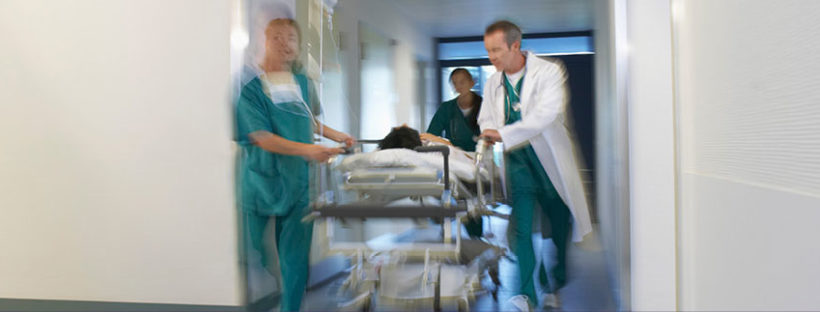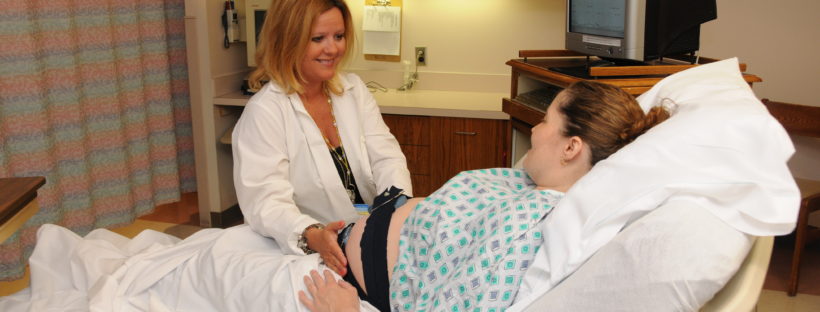
by, Lori Boggan, RN
When we enter the medical profession, we make a lifetime commitment to the service of others. As nurses, we serve our patients, our community, our friends, and our family. No other profession has such a deep connection to and is so trusted by society. We are the ones at the bedside day and night. We are the ones that our patients trust with their privacy, their secrets, and their lives.
Volunteer nursing is no foreign concept for American nurses. In fact, the earliest “nurses” were nuns, or family members of those active in the Civil War. They were in the trenches before any formal nursing education or organization existed.
For most, nursing is a calling. Nurses are innate caregivers. What is it about a nurse that is willing to use her own money, travel to an unfamiliar place sometimes lacking basic accommodations, and work long hours without pay? It is the drive to care for those in need.
The following interview is with one of AWHONN’s own that goes above and beyond. Nancy Stephani Zicker, a labor and delivery nurse from Central Florida has journeyed to Guatemala yearly since 2014 to help less fortunate women in need of gynecological surgery. She journeys with her friend and obstetrician, Dr. Cecille Tapia-Santiago, of Volusia ObGyn Daytona Beach. In addition to gynecological surgeries each year, Dr. Tapia sees patients in the mission’s clinic and educates Guatemalan midwives. I interviewed both ladies in hope to inspire others to join mission work.
How long have you been going on missions?
Nancy: I have been going on yearly medical mission trips every March since 2014.
Cecille: I have been doing 1-3 mission trips a year since 2000.
Where has your mission work taken you?
Both: Guatemala
Why Guatemala? Is there any particular need there with regard to women and infant’s health?
Cecille: Absolutely. When we go there we provide contraceptive care, well woman care, and manage surgical conditions (uterine fibroids, large ovarian cysts, and pelvic prolapse being the most common).
Describe a typical day in the life of a volunteer nurse.
Nancy: Each year that I have gone, I have been assigned to work as a circulating nurse (and sometimes scrub in to tech or assist) in the OR. There are clinic nurses, OR nurses, PACU nurses and ward (floor) nurses.
 We go in to a completely bare room and make it a functioning OR.
We go in to a completely bare room and make it a functioning OR.
As an OR nurse, we first have to unpack and sort all of our supplies, as well as set up the operating rooms. We arrive on a Saturday late afternoon and get right to work. Sometimes we set up in community centers and sometimes we set up in an actual hospital. This usually takes Saturday evening and all day Sunday to accomplish.
Monday morning, the surgeries begin. Depending on the number of cases scheduled, we usually are in the OR from 8am-5pm. Once all surgeries are done at the end of the week, we have to break down the ORs to leave the space as we found it and inventory all supplies so we can order more for next year. We all have had to improvise and be creative with available equipment and supplies. It’s quite the challenge, but the entire team comes together and we make it work.z
 Cecille, describe your work educating midwives in Guatemala
Cecille, describe your work educating midwives in Guatemala
It’s THE BEST PART. Midwives in Guatemala are mostly lay (no formal training at all). Guatemala has one of the highest infant mortality rates in the world. We do 1-2 day seminars and teach basic infant resuscitation as well as basic management of labor, delivery and postpartum complications. The midwives have to deal with a lot of prejudice from the physician community and often won’t get paid for their service if the patient has to be transferred to a hospital. So anything they can do to show their critics that they are furthering their education and are doing right by a patient is helpful.
Is there any one particular patient story that you can share that stands out in your mind where you felt you really made a difference in that patient’s life?
Cecille: One of the midwives came back to a refresher course and told us that she gave CPR to a baby with apnea. Initially the family was resistant and thought the baby was dead. The midwife pulled out her certificate from the seminar and showed the family. She told the family to let her try and do CPR. She successfully performed mouth to mouth and chest compressions and the baby was fine! We also had a young lady with an enormous pelvic mass that was compressing her entire abdomen and pelvis. She had been turned down by everyone and when we saw her, she was cachectic and probably a few weeks away from dying. We removed an enormous yet benign ovarian cyst. It was over 50cm in diameter and weighed 25 pounds.
How has mission work changed your practice?
Nancy: It has made me a better nurse. Seeing and working with the patients I see on my mission trips has renewed my love of nursing and my compassion for people in general. The patients I see on these trips are so profoundly grateful for the care they receive. It helps to renew one’s zest for nursing.
Cecille: It hasn’t really changed how I practice at home, but you have to be a particular type of person to do well on these trips. In order to do this type of work you have to be patient, flexible, meticulous, and creative. You can’t go to these trips if you’re going to expect U.S. standards of equipment, timeliness and availability of things you have every day at home (for example blood, cautery, suction, light). I have seen time and time again physicians, nurses and staff struggle because they have unrealistic expectations of what it’s like to operate in third world conditions. And by the same token seen plenty (like Nancy) that just sail, adapt and just sail.
How has mission work changed you as an individual?
Nancy: Personally it has made me realize that as humans we all want the same things- we want our children healthy, we want access to quality healthcare, we want to be able to be happy in our daily lives, and we want a peaceful existence.
Cecille: It refreshes my choice and faith in my profession. Medicine has changed so much. The physician/patient relationship many times is not what it used to be. We live in a defensive medicine environment that often plays in to how we practice here. Over there, patients and families trust and believe that, just like at home, I do my very best to provide the very best care my skill set allows, and that I will never go above that skill set and take unnecessary risks. That trust factor makes any responsibility tolerable.

What advice would you give a nurse contemplating mission work?
Nancy: It’s important to choose the right organization to join, one that interests you. Each one has a different application process and requirements, as well as when and where they go on their trips. They all differ with their missions and what they offer. I have gone on 3 trips so far, and have applied for my 4th with the same group. It’s called Cascade Medical Team, whose parent organization is Helps International. I have friends that have used various other organizations. It’s important to choose one that fits your interests and your budget, as well as the dates you’re available to go. Also, for me on my first trip, it really helped that I went with someone I knew and who had experience with volunteering for medical mission trips. Not only was she able to give me a heads up on what to expect, but it is just amazing to be able to share the experience with someone you know- someone who understands why you would want to, or should want to, volunteer for such a trip
.
How can a nurse prepare for his/her first mission?
Nancy: Be open-minded. Prepare to go out of your comfort zone and learn new things, both in the nursing/medical field and also culturally.
 Where to next?
Where to next?
Nancy: To date, I have only been to Guatemala. At this point in time, I only volunteer for one mission trip each year and I have found that I really enjoy helping the people there and so have concentrated my trips to Guatemala.
Thanks for sharing, Nancy and Cecille! And thank you for your service! For more information on their work with Cascade Medical Team, visit www.cascademedicalteam.org.
Lori Boggan, RN
Lori is a NICU Staff Nurse at Sahlgrenska University Hospital in Gothenburg, Sweden. After becoming a nurse, Lori traveled across the country to work a three-month travel contract in San Francisco, California. Nearly five years later her journey continued to Gothenburg, Sweden, where she now lives and works. She also write her own blog Neonurse at https://neonursetravels.com/ or on Instagram.

 We go in to a completely bare room and make it a functioning OR.
We go in to a completely bare room and make it a functioning OR.  Where to next?
Where to next?
 Donna is a Perinatal Clinical Specialist at JFK Medical Center in NJ. She has always loved OB nursing and also enjoys teaching. She is currently an adjunct instructor at Kaplan University and Walden University. She was the Hospital Lead for AWHONN’s PPH Project.
Donna is a Perinatal Clinical Specialist at JFK Medical Center in NJ. She has always loved OB nursing and also enjoys teaching. She is currently an adjunct instructor at Kaplan University and Walden University. She was the Hospital Lead for AWHONN’s PPH Project.
 With Kelsey’s second baby, after discussing the risks and benefits with her provider, Kelsey wanted to attempt VBAC. I was very hopeful for her, but sick to my stomach a little too. Remembering Pam’s story, I was incredible apprehensive and ultimately didn’t want anything bad to happen to Kelsey. Her pregnancy flew by and was induced at 39 weeks and 5 days. I raced to the hospital with the very important job of taking pictures. Kelsey’s labor progressed and she delivered quickly with no complications. Watching my best friend get to see her baby immediately and hold and soothe her right away is one of my most favorite memories of my career. I had taken care of many women who had successful VBAC, but did not really understand its significance until seeing first hand Kelsey and her husband experience both types of delivery. Never having a cesarean myself, but circulating hundreds, I considered them routine. It was very powerful for me to see the difference between a vaginal birth and a cesarean for the same woman.
With Kelsey’s second baby, after discussing the risks and benefits with her provider, Kelsey wanted to attempt VBAC. I was very hopeful for her, but sick to my stomach a little too. Remembering Pam’s story, I was incredible apprehensive and ultimately didn’t want anything bad to happen to Kelsey. Her pregnancy flew by and was induced at 39 weeks and 5 days. I raced to the hospital with the very important job of taking pictures. Kelsey’s labor progressed and she delivered quickly with no complications. Watching my best friend get to see her baby immediately and hold and soothe her right away is one of my most favorite memories of my career. I had taken care of many women who had successful VBAC, but did not really understand its significance until seeing first hand Kelsey and her husband experience both types of delivery. Never having a cesarean myself, but circulating hundreds, I considered them routine. It was very powerful for me to see the difference between a vaginal birth and a cesarean for the same woman. Bree Fallon, BSN, RNC-OB, C-EFM
Bree Fallon, BSN, RNC-OB, C-EFM



 by, Bree Fallon, BSN, RNC-OB, C-EFM
by, Bree Fallon, BSN, RNC-OB, C-EFM

